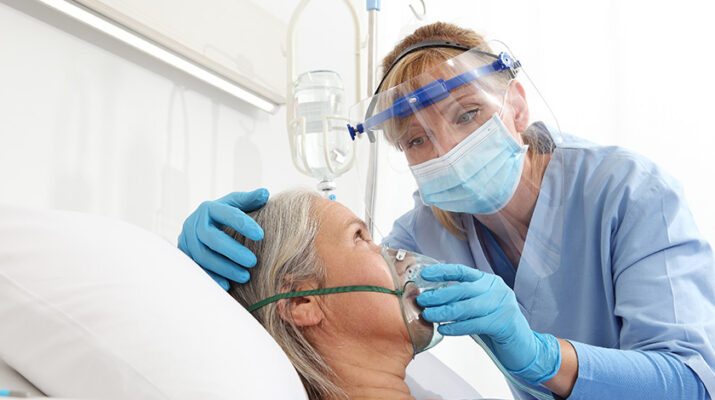By Deborah Jeanne Sergeant
A licensed respiratory therapist can make an annual mean wage of $65,770
With only an associate degree, a licensed respiratory therapist can make an annual mean wage of $65,770. The career is ranked at sixth in the US News & World Reports’ Top Health Care Jobs. The US Department of Labor states that by 2029, they expect a 19%-plus increase in demand for respiratory therapists.
These professionals take care of patients of all ages who have breathing difficulties. This can include assessing, treating and supervising respiratory therapy technicians in inpatient and outpatient settings.
Stephen G. Smith, respiratory therapist and past chairman and extended member of the New York State Education Department Respiratory Therapy Licensure Board, said that 74% of respiratory therapists work in hospitals. That is because it is not covered by Medicare or health insurance, making it a costly service for doctor’s offices to provide. Large healthcare systems can more easily absorb the expense.
“One of our concerns is that they need to work in inpatient and outpatient settings,” he said.
He is working to require a bachelor’s degree for the profession. However, that can only help respiratory therapists gain employment because it will open the way for health insurance companies to cover their services. Medicare requires a bachelor’s degree as a minimum for this type of provider to be covered and typically, health insurers follow Medicare’s lead on what’s covered.
“What would happen is those practicing now would be grandfathered in,” Smith said. “Once the bill became law, those in school, whether associate degree or bachelor’s, would require a Bachelor of Science degree in respiratory therapy to practice.”
Then, the person needs to pass a licensure exam to practice.
The role has room to grow with positions in supervision and management, positions in academia for those willing to achieve the necessary experience and, as needed, further education. In addition to these roles, Smith has also operated his own durable medical equipment business that specialized in chronic pediatric cardiopulmonary cases.
“You have to be strong in math and the sciences,” Smith said. “You have to have good interpersonal skills and be able to talk with people and educate people with cardiopulmonary diseases and their families. That’s a big responsibility.”
Kristine Barrett, respiratory therapist with Rochester Regional Health, felt drawn to the career through a personal experience. One of her premature twin boys, Jake, used a mechanical ventilator at a year old. She managed so much of his care so competently that a nurse complimented her on her ability to quickly learn and apply information toward her son’s care.
“The ventilator and troubleshooting it seemed easy for me,” she said.
She felt that since she could take good care of Jake, she could also care for others. She completed a two-year course at Genesee Community College in Batavia about six months after Jake underwent surgery to correct his heart condition.
That was 27 years ago. Now working at Unity Hospital, Barrett cares for older adults, which can be challenging because of the amount of loss of life she sees daily.
“When I was in the program, at the point where we talked about death, we had to realize we’re going to lose way more patients than we’re going to save,” Barrett said.
Many people do not understand what respiratory therapists do or think that they are nurses. That can make her day a little difficult at times.
Barrett believes that possessing solid math and science skills, compassion, integrity, flexibility and a thick skin help people interested in going into respiratory therapy.
“You’re in situations where the adrenaline is high, emotions run high, and it can be challenging,” she said. “Know that you are part of a team that saves patients’ lives and there’s nothing more rewarding than that.”

